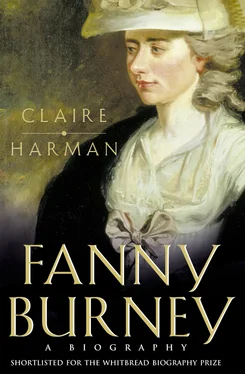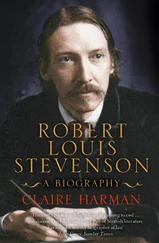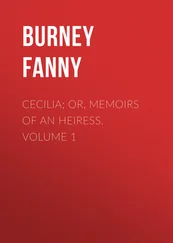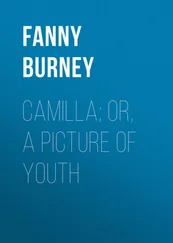Fanny Burney’s freedom with language reflects her self-image as an ‘outsider’ in literature and her defiance of conventional limitations in a manner that could be seen as rebellious, even revolutionary; but, as with her natural and powerful feminism, her sense of propriety, personal prejudices and deep conservatism all militated against her acknowledging this. The more she did acknowledge it, the more inhibited her writing became. Any connection with anti-conventionality, however abstract, was problematic for her, as we shall see in numerous instances. She deplored disrespect to authority, and was such an arch-Tory in her youth that even her father (not a man noted for his liberal politics) teased her with the nickname ‘Fanny Bull’. But howevermuch her conservatism affected her behaviour socially, it never inhibited Fanny Burney from inventing words and phrases – ‘John Bullism’ itself is one of them. 93 As Waddell has remarked, her innovations ‘reveal a relaxed enjoyment of language for its own sake, and an unashamed pleasure in its flexibility’, and set her apart as a ‘transcriber of the ordinary, as well as a pioneer in the unusual’. Whatever other anxieties Fanny Burney developed as a writer, language remained an area where she felt perfectly free.
*The modern spelling is ‘Chessington’.
†The County History says that Hamilton paid for the property, but records in the Surrey History Centre state that he was ‘only son and heir’ of Rebecca Hatton of Chesington. Mrs Hatton was, presumably, widow or sister of Thomas Hatton, owner of Chesington Hall until his death in 1746. The different surname of Rebecca’s children indicates that they were the issue of an earlier marriage.
*Chesington Hall was pulled down in 1833–4 and rebuilt on the old foundations. It was this short-lived Victorian building (demolished a century later and now covered over by a residential estate) which Constance Hill and her sister Ellen visited when writing Juniper Hall (published in 1904). Neither Ellen Hill’s picture of the Hall in that book (p.147) nor an older amateur drawing in the archives of the Surrey History Centre gives much idea of the house as it was in Crisp’s day, but the records of leases and releases do. They itemise the rooms reserved by Sarah Hamilton after the property was divided: ‘on the ground floor, the Hall and the Brown and Best Parlours next the Garden with the closets therein, the small beer cellar, the under ground cellar communicating with the small beer cellar, and those rooms up a pair of stairs called the Best Chamber, the Brown Room, the Paper Room, the Wrought Room and the Green Room; the rooms up two pair of stairs (except the first room which communicates with the Back Stairs wherein the farmer’s men usually lie), Stable, Coachhouse, the Brewhouse with the Apple Chamber over it, the Pidgeon House, the Great Garden adjoining the sd. messuage and Brewhouse, the Necessary in the Garden, the Lower Garden adjoining the Necessary, the Pound Meadow, the Walk to the Church with trees on both sides of it and the fruit thereof, the use of the Pump and all other Courts, yards, ways and passages in and about the sd. messuage’. 29
†Like many spinsters of mature years, Sarah Hamilton had adopted the title ‘Mrs’.
*And which Jane Austen knew well too – it is the book Mr Collins insists on reading aloud to the Bennet girls in Pride and Prejudice .
*1766 is the likely date: Susan’s miscellaneous writings show she was in London by the spring of 1767. 45
*The date – 1766–7 – is conjectural, based on Crisp’s estimate in 1779 that the incident took place ‘about a Dozen Years ago’ 48 and Fanny’s statement in 1771 that she had not been to Chesington ‘for almost five years’. 49
*‘Allen’ was Elizabeth’s maiden name as well as her first married name.
*Why she should have loaned such an enormous sum, apparently without interest, for a period of thirty years, is a mystery.
In 1768, the year when Fanny began to write her diary, Hetty Burney and Maria Allen, aged nineteen and seventeen respectively, were making their entrances into the world. Fanny observed their progress with profound interest and a degree of ironic detachment. Both the older girls had plenty of admirers and indulged to the full the drama of playing them off against each other. Subsequent to every evening out there would be a trail of young men calling at Poland Street, some dull, some rakish, some unsure which girl to court, some, like Hetty’s admirer Mr Seton, happy to talk to Fanny in her sister’s absence, and to discover, as the chosen few did, how well the sixteen-year-old could keep up a conversation:
[Mr Seton]: I vow, if I had gone into almost any other House, & talk’d at this rate to a young lady, she would have been sound a sleep by this Time; Or at least, she would have amused me with gaping & yawning, all the time, & certainly, she would not have understood a word I had utter’d.
F. ‘And so, this is your opinion of our sex? –’
Mr S. ‘Ay; – & of mine too.’ 1
‘I scarse wish for any thing so truly, really & greatly, as to be in love’, Fanny confessed to patient ‘Nobody’, but she didn’t relish being the object of someone else’s adoration. A ‘mutual tendresse’ would be too much to ask for – ‘I carry not my wish so far’. 2
Fanny was just reaching the age at which she was allowed to accompany the older girls to assemblies and dances, some of which went on all night. They would set off in the family coach and straggle home in hired sedan chairs at seven or eight in the morning. There were seldom any chaperones (sometimes because the girls had deceived their father into thinking there was no necessity for one, and he was too negligent to check). Fanny made her first serious conquest – a youth called Tomkin whom she didn’t want – at the most sophisticated and risqué of the entertainments on offer to young women at the time, a masquerade. Masquerade balls were notorious as places of assignation, and excited widespread disapproval. Henry Fielding’s brother, the famous magistrate Sir John Fielding, had been trying for years to close down the establishment run by Mrs Corneley, an ex-lover of Casanova. Contemporary engravings of her parties in Soho Square show some bizarre characters, including a man leading a live bear and a person dressed as (or rather, in) a coffin, with his feet protruding from the bottom and eyeholes cut in the lid. There is also a masquerader in the character of Adam, naked except for a shrubbery loincloth, which recalls the scandalous costume of Miss Chudleigh at the Venetian Ambassador’s masquerade, who went as ‘Iphigenia’, wearing nothing but a piece of gauze. 3
Fanny Burney had nothing quite so challenging to deal with at Mr Lalauze’s masquerade in Leicester Square: there was a nun, a witch (who turned out to be a man), a Punch, an Indian Queen, several Dominoes and the predictable flock of shepherdesses. The Burney girls had spent the whole day dressing, Hetty in a Savoyard costume, complete with hurdy-gurdy, and Fanny (much less adventurously) in ‘meer fancy Dress’, a highly-decorated pink Persian gown with a rather badly home-made mask. Despite its flimsiness, the mask gave Fanny ‘a courage I never before had in the presence of strangers’ 4 and, as with Mr Seton, she ‘did not spare’ the company. According to the procedure at masquerades, everyone was obliged to support their character, passing from one person to another asking, ‘Do you know me? Who are you?’ 5 until partners had been chosen and the dramatic (or not) moment of unmasking arrived. Fanny’s partner was a ‘Dutchman’ (Mr Tomkin) who had spent the evening grunting at her and using sign language. ‘Nothing could be more droll than the first Dance we had after unmasking’, she told Nobody later:
Читать дальше












